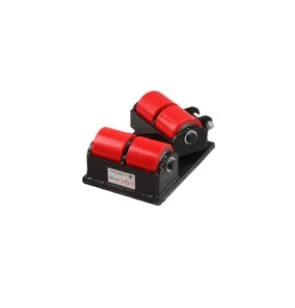Powerful 300kg Lifting Magnet for Heavy Duty Industrial Applications
The Power and Application of a 300kg Lifting Magnet
In the world of industrial machinery, lifting magnets play a pivotal role in improving efficiency and safety during material handling processes. Among the various types available, the 300kg lifting magnet stands out for its remarkable capability to lift heavy ferromagnetic materials with ease and precision. This article delves into the mechanics, features, applications, and benefits of employing a 300kg lifting magnet in various industries.
Mechanics of Lifting Magnets
Lifting magnets operate based on the principles of electromagnetism. When electric current flows through the coil surrounding the magnet, it generates a magnetic field strong enough to lift heavy objects, often exceeding the weight of 300 kilograms. The lifting capacity of a magnet is determined by its design, the material it is made from, and the quality of the electric current supplied. For a 300kg lifting magnet, the design is particularly robust, ensuring reliable operation over an extended period.
Notable Features
A 300kg lifting magnet is characterized by several key features that enhance its usability
1. Strong Lifting Capacity As the name suggests, it can safely lift materials weighing up to 300 kg, making it suitable for medium to heavy lifting tasks.
2. Safety Mechanisms Many models come equipped with safety features, such as a manual release lever and an alarm system that activates if the magnet loses power unexpectedly. These features minimize the risk of accidents.
3. Versatility The lifting magnet can be used with various ferromagnetic materials, including steel plates, bars, and sheets, making it versatile across different industrial contexts.
4. Ease of Use The design typically includes a simple switch to activate or deactivate the electromagnetic field, allowing operators to handle heavy loads effortlessly.
5. Durability Constructed from robust materials, these magnets are designed to withstand harsh working conditions, ensuring longevity and reliability.
Applications in Various Industries
The 300kg lifting magnet finds applications in numerous industries, enhancing productivity in operations that involve heavy loads
lifting magnet 300kg

1. Manufacturing In factories, these magnets are utilized for loading and unloading steel and metal components, facilitating efficient assembly line operations.
2. Construction Operators use lifting magnets in construction sites to hoist steel beams and other heavy metal structures into place, reducing the need for traditional cranes.
3. Waste Management In recycling facilities, these magnets help sort ferromagnetic metals from non-metal debris, ensuring effective material recovery processes.
4. Shipbuilding The maritime industry utilizes lifting magnets to transport heavy metal parts and components, streamlining the construction and repair of ships.
5. Automotive Industry In automotive manufacturing, lifting magnets are vital for manipulating large metal parts during assembly, contributing to efficient workflows.
Benefits of Using a 300kg Lifting Magnet
The integration of a 300kg lifting magnet in operational procedures brings forth numerous benefits
- Increased Efficiency By using lifting magnets, industries can significantly reduce the manual handling of heavy loads, thus saving time and labor costs.
- Enhanced Safety With built-in safety features, these magnets minimize the risks associated with lifting heavy materials, protecting workers from potential injuries.
- Cost-Effectiveness While the initial investment might be considerable, the long-term savings realized through increased efficiency and reduced labor costs can justify the expense.
- Environmental Benefits In recycling and waste management, the effective collection of ferrous metals with lifting magnets promotes sustainability by enhancing recycling rates.
In conclusion, a 300kg lifting magnet is an invaluable tool in various industries, merging safety, efficiency, and practicality. Its ability to effortlessly lift substantial weights transforms how materials are handled, paving the way for modern industrial advancements. As technology continues to evolve, the potential for these lifting devices to enhance operations will only grow, marking a significant step forward in material handling solutions.
-
Unlock Seamless Relocation with Our Heavy Equipment Moving ExpertiseNewsJun.06,2025
-
Unleash Unrivaled Flexibility with Our Adjustable Gantry CraneNewsJun.06,2025
-
Unleash Heavy-Duty Efficiency with Our Industrial Gantry Crane SolutionsNewsJun.06,2025
-
Revolutionize Steel Handling with Our Magnetic Lifter RangeNewsJun.06,2025
-
Master Equipment Mobility with Premium Machinery Mover SolutionsNewsJun.06,2025
-
Elevate Your Material Handling with Magnetic Lifter TechnologyNewsJun.06,2025
-
YS Permanent Lifting Magnets: The Smarter Way to Handle SteelNewsMay.22,2025
